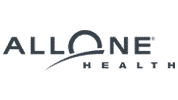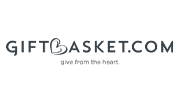Effective Lead Generation Strategies for E-Commerce Websites
E-commerce success begins with a website that not only attracts visitors but also provides an exceptional user experience. A well-optimized website is designed to be fast, visually appealing, and fully responsive on both desktop and mobile devices. Navigation should be intuitive, ensuring that users can easily find what they are looking for without unnecessary distractions. An effective design involves clear product categorization, high-quality images, and a layout that highlights key offers or promotions. The checkout process must be seamless, minimizing steps and reducing any potential friction that could lead to cart abandonment. Additionally, attention to technical details like load times, secure payment gateways, and a mobile-first approach can significantly enhance user satisfaction. A site that is both visually attractive and user-friendly sets the stage for increased engagement and higher conversion rates, ensuring that visitors are more inclined to trust your brand and proceed with a purchase.
Clear and Persuasive Calls-to-Action (CTAs)
Once visitors land on your website, it is crucial to guide them toward taking the next step through clear and persuasive calls-to-action (CTAs). CTAs are the touchpoints that encourage users to engage further with your brand, whether that means signing up for a newsletter, exploring a new product range, or making a purchase. To craft effective CTAs, it is essential to use concise, action-oriented language that immediately communicates a benefit. For example, phrases like “Shop Now,” “Get 20% Off Today,” or “Join Our VIP List” can prompt users to take action. The placement of CTAs is equally important; they should be strategically positioned on high-traffic pages such as the homepage, product pages, and blog posts to maximize visibility. Visual elements also play a role—buttons with contrasting colors and clear typography can draw the eye and encourage clicks. Testing different CTA placements and designs through A/B testing can provide insights into what works best for your audience, ensuring that every call-to-action is optimized for maximum conversion potential.
Email Marketing Campaigns
Email marketing remains one of the most powerful tools for driving conversions and nurturing leads in the e-commerce space. By capturing visitor information through sign-ups and integrating email campaigns into your overall strategy, you can create personalized interactions that build lasting customer relationships. The first step in an effective email marketing campaign is to develop a segmented email list that categorizes subscribers based on their interests, past purchases, and engagement levels. This segmentation allows you to tailor content and promotions to the specific needs of different groups, thereby increasing the relevance and effectiveness of each email. Email campaigns should be well-designed, mobile-friendly, and include a clear value proposition that encourages recipients to take action. For instance, welcome emails that offer an exclusive discount or a free resource can immediately engage new subscribers. Regular newsletters, product updates, and personalized recommendations help maintain customer interest over time, driving repeat business and fostering loyalty. Automation tools can streamline the process by sending triggered emails based on user behavior, such as abandoned cart reminders or post-purchase follow-ups. Integrating your email efforts with a comprehensive lead generation service can further refine your approach, ensuring that your campaigns are not only well-targeted but also consistently optimized for performance.
By focusing on these three key areas—optimizing website design and user experience, implementing clear and persuasive CTAs, and executing effective email marketing campaigns—e-commerce businesses can create a robust lead generation framework. A visually appealing, user-friendly website draws visitors in and encourages them to explore, while strategically placed CTAs guide them toward conversion. Complementing these efforts with personalized and automated email campaigns ensures that leads are nurtured throughout the buying journey, resulting in higher engagement and sustained growth. This integrated approach not only enhances the overall customer experience but also drives long-term business success.
Content Marketing and SEO
For an e-commerce website, content marketing paired with effective SEO strategies is a critical driver for organic traffic and lead generation. Producing high-quality content that addresses customer needs while optimizing for search engines enables your website to rank higher in search results. This means developing informative blog posts, buying guides, product tutorials, and industry insights that answer your audience’s most pressing questions. To achieve this, start with thorough keyword research to understand the terms your potential customers use. Once identified, integrate these keywords naturally into your content, including headings, subheadings, and meta descriptions, ensuring that the writing remains engaging and informative. Equally important is creating a consistent publishing schedule that not only builds trust with your audience but also signals to search engines that your site is a reliable resource. By strategically using both content marketing and SEO, your e-commerce platform can attract a steady stream of organic visitors who are more likely to convert into leads and customers. Furthermore, including compelling visuals such as infographics, product images, and videos enhances engagement and encourages visitors to spend more time on your site, which positively affects your search rankings and overall lead generation outcomes.
Social Media Engagement and Advertising
In today’s digital environment, social media is an indispensable channel for e-commerce lead generation. Engaging actively on platforms such as Facebook, Instagram, and Pinterest not only increases brand visibility but also drives targeted traffic to your website. Effective social media engagement involves more than just posting product images; it requires a consistent strategy that includes sharing valuable content, interacting with followers, and leveraging user-generated content. Social media advertising can further enhance these efforts. By using targeted ads and sponsored posts, you can reach specific demographics based on interests, behaviors, and geographic location, ensuring that your message reaches potential customers who are most likely to be interested in your products. Regular social media campaigns can be designed to promote new arrivals, special discounts, or exclusive offers, while contests and interactive posts keep your audience engaged. Additionally, tracking social media metrics such as engagement rates, click-through rates, and conversion metrics helps refine your strategy and maximize your advertising budget. Integrating social media with your overall lead generation strategy creates a multi-channel approach that nurtures leads at various stages of the buyer’s journey, ultimately enhancing both brand loyalty and revenue.
Personalization and Product Recommendations
Personalization is a powerful tactic in e-commerce that can significantly boost both customer satisfaction and conversion rates. Leveraging data analytics to understand customer behavior allows you to tailor the shopping experience to individual preferences. Personalization can be implemented through customized email campaigns, dynamic website content, and targeted product recommendations that show customers items based on their browsing history and past purchases. For instance, a “Recommended for You” section on your homepage or product pages can display items that align with a visitor’s interests, making the shopping experience more intuitive and engaging. This level of customization not only improves user experience but also drives higher conversion rates, as customers are more likely to make a purchase when they feel that the recommendations are tailored to their needs. Integrating personalized experiences with a robust strategy—potentially supported by a comprehensive lead generation service—ensures that your e-commerce platform continually adapts to user preferences, fostering long-term relationships and repeat business. Additionally, personalization efforts extend to special offers and promotions that are specifically designed to re-engage customers who have shown interest in your products but have not yet completed a purchase. By dynamically adjusting product recommendations and promotional messaging, you create an interactive and engaging shopping environment that not only captures leads but also converts them into loyal customers.
By harnessing the power of content marketing and SEO, actively engaging in social media, and implementing personalization strategies with targeted product recommendations, e-commerce websites can build an effective lead generation framework. These tactics work in synergy to attract visitors, guide them through the buying process, and ultimately convert them into satisfied customers, ensuring sustainable growth in a competitive digital marketplace.
Referral Programs and Loyalty Rewards
Referral programs and loyalty rewards are powerful strategies that encourage existing customers to become brand advocates, turning satisfied buyers into a source of new leads. For e-commerce websites, word-of-mouth remains one of the most trusted forms of marketing. By incentivizing referrals through discounts, exclusive offers, or loyalty points, businesses can stimulate organic growth. An effective referral program is simple and transparent, clearly outlining the benefits for both the referrer and the referred. For example, customers might receive a discount on their next purchase when a friend they refer makes a purchase, while the new customer might enjoy a welcome discount as well. Loyalty rewards programs further enhance customer retention by acknowledging repeat business and fostering long-term engagement. These programs can include tiered rewards where benefits increase with continued patronage, thereby encouraging more frequent interactions with the website. When customers feel appreciated and see tangible benefits from their loyalty, they are more likely to refer others and continue to support your brand. Ultimately, this creates a virtuous cycle that not only boosts lead generation but also enhances customer lifetime value.
Use of Pop-Ups, Chatbots, and Live Chat
The strategic deployment of pop-ups, chatbots, and live chat can dramatically enhance lead capture on e-commerce websites. When used judiciously, these tools can create a seamless and interactive experience without detracting from the user’s shopping journey. Pop-ups, for example, can be used to capture visitor information by offering incentives such as a discount code or access to an exclusive content piece. The key is to time these pop-ups correctly—triggering them based on user behavior, such as exit intent or scrolling activity, ensures they do not interrupt the browsing experience. Meanwhile, chatbots provide immediate responses to common customer queries. They are particularly valuable because they can operate 24/7, ensuring that no potential lead is lost due to time zone differences or after-hours browsing. Chatbots can answer frequently asked questions, guide users to product pages, and even help with the checkout process by offering assistance at critical moments. Live chat, on the other hand, introduces a human element that can resolve complex issues in real time. By integrating live chat support, e-commerce websites offer personalized customer service, which can help convert hesitant visitors into satisfied customers. These interactive tools not only improve the overall customer experience but also enable the collection of valuable data that can be used to further refine marketing strategies and boost lead generation.
Retargeting and Remarketing Campaigns
Retargeting and remarketing campaigns are essential tactics for recapturing the interest of visitors who have interacted with your website but left without converting. These strategies work by placing tracking pixels on your website that record visitor behavior. When users leave your site, they are then targeted with personalized ads on other platforms, reminding them of the products they viewed or offering incentives to return and complete their purchase. This approach is highly effective because it focuses on an audience that has already shown interest in your offerings, making them more likely to convert upon subsequent exposure. Remarketing can be enhanced by tailoring ads based on user behavior, such as showcasing related products or highlighting customer testimonials that reinforce the value of your offerings. Additionally, retargeting campaigns can incorporate dynamic ads that update in real time to reflect current promotions or inventory levels, providing a personalized and timely nudge for potential customers. By maintaining a persistent presence across various digital touchpoints, retargeting and remarketing not only boost conversion rates but also reinforce brand recognition and recall among your target audience.
Analytics and Continuous Optimization
Measuring the performance of your lead generation strategies is crucial to ongoing success, and analytics play a pivotal role in this process. By monitoring key performance indicators such as conversion rates, click-through rates, average order values, and overall return on investment, you can gain valuable insights into which tactics are working and which need refinement. Analytics tools like Google Analytics, combined with data from social media and email campaigns, allow you to track user behavior across your website and identify bottlenecks in the conversion funnel. This data-driven approach empowers you to conduct A/B testing on various elements—such as pop-up timing, chatbot scripts, ad creatives, and landing page layouts—to determine the most effective methods for capturing and converting leads. Continuous optimization is not a one-time effort; it involves regularly reviewing performance metrics and adapting strategies to reflect evolving market conditions and customer preferences. Integrating this analytical mindset with your broader marketing efforts, and even partnering with a dedicated lead generation service when needed, ensures that your e-commerce platform remains agile and competitive. Over time, these iterative improvements build a robust framework for lead generation, resulting in increased conversion rates, higher customer satisfaction, and sustained business growth.
By incorporating referral programs and loyalty rewards, strategically deploying pop-ups, chatbots, and live chat, leveraging retargeting and remarketing campaigns, and committing to analytics and continuous optimization, e-commerce websites can build a comprehensive lead generation strategy. These interconnected tactics work together to attract, engage, and convert visitors into loyal customers, driving long-term success in a competitive digital marketplace.

















